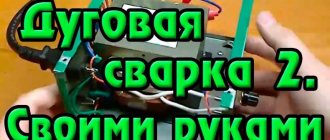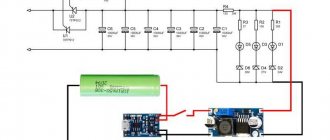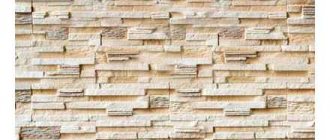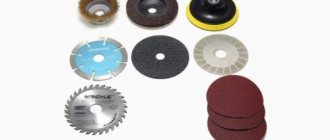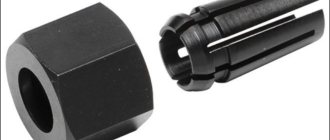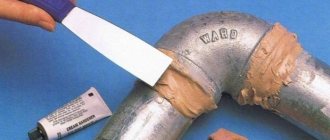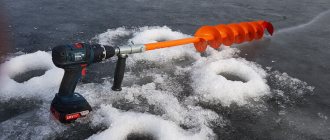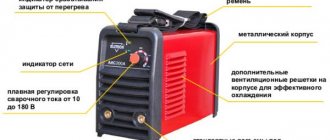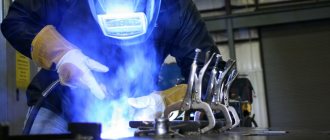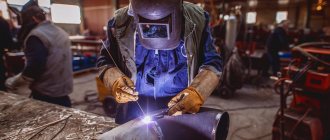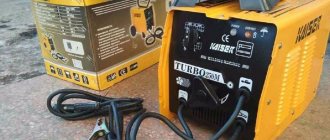Non-consumable or refractory electrodes are widely used for gas shielded electric arc welding. They are used for home repairs and in various industries: from spacecraft assembly stations to small serial factories. Using non-consumable rods, you can weld or cut aluminum, bronze, nickel, copper, titanium and other metals that do not have strong magnetic properties. From this article you will learn everything about non-consumable electrodes, their scope of application, advantages and disadvantages, and we will also talk about the key features of working with refractory rods.
Types of refractory electrodes and areas of their application
There are three types of non-consumable rods: carbon, tungsten and graphite. Each type has its own characteristics and purpose. For example, for minor repairs or for air-arc cutting, carbon rods are most often used. They are also used to weld thin metal structures made of non-ferrous metal or stainless steel. Experienced craftsmen use carbon electrodes in combination with additives. Additives are fed into the weld pool or placed along the line of the future weld.
Air arc cutting (abbreviated as VAC) is a method of cutting metal with an electric arc, which consists of a continuous supply of compressed air to the welding zone during the entire working process. Thanks to compressed air, molten metal is quickly removed from the surface of the part, resulting in a high-quality and even cut.
Carbon rods are used with a current strength of 580 A. The rods themselves are of three types: round for air-arc cutting (AAC), flat for air-arc welding (AAR), round for conventional welding (SC).
As for other types of refractory rods, graphite rods can also be used to weld and cut non-ferrous metals, but they are cheaper compared to carbon rods. Therefore, graphite rods are popular among novice welders working in production. Also, graphite rods withstand changes in temperature and humidity better, they can be used repeatedly, and are less susceptible to wear. We’ll talk about tungsten rods separately.
Types of consumables
To perform the work, electrodes with a high melting point are used, exceeding the threshold for the transition to the liquid phase of the workpieces being welded and the temperature of the arc discharge. In addition to graphite or carbon rods, tools made of pure tungsten or alloys based on it are used. The electrode material is selected depending on the thickness and chemical composition of the parts being welded.
We recommend reading Standard weight of electrode packaging
Graphite
This type is resistant to high temperatures and has increased durability compared to carbon rods. Used for industrial welding of copper cores of cables or parts made of copper or aluminum based alloys. Electrodes can be used to connect structures made of steels with low carbon content (the seam does not have high mechanical strength) or to seal defects in cast iron castings.
Graphite electrodes for welding are infusible.
Coal
They are used for air-arc cutting of steel sheets or to eliminate defects on the surfaces of thick-walled workpieces (both with the supply of filler material and without wire). The current in the circuit is up to 600 A (enough to heat structural and low-alloy steels to the melting point). Intended for industrial use, not found in household welding machines.
Carbon electrodes are intended for industrial use.
Tungsten
The products are intended for household or industrial use; they allow joining parts made of different metals in an inert gas environment. Argon arc welding is carried out with electrodes with a core with a diameter of 1-4 mm, coated with a protective coating. Since the melting point of tungsten is higher than the arc temperature, the tool does not wear out and allows welding alloy steel sheets. To change the performance characteristics, additives (for example, thorium, yttrium or lanthanum oxide) are introduced into the metal composition of the tool.
In accordance with GOST 23949-80, the following types of electrodes are produced:
- EHF – made of pure metal tungsten without alloying;
- EVL – with the introduction of 1.1-1.4% lanthanum oxide;
- EVI - using 1.5-3.5% yttrium oxide;
- EVT - containing 1.5-2.0% thorium dioxide (they are characterized by low radioactivity and are rarely used for welding special structures).
Tungsten electrodes are intended for household use.
The applicability of alternating and direct current depends on the brand of electrodes. For example, EHF series rods are designed to supply only alternating voltage. Other products can operate at any current and with direct or reverse polarity. It should be taken into account that during the welding process, the refractory core gradually burns out (for example, for a tungsten rod, the norm is to reduce the length by 10 mm over 5 hours of continuous operation).
Tungsten electrodes
Tungsten electrodes deserve special attention. They are widely used by everyone: both garage craftsmen and craftsmen in factories. Their popularity is due to their versatility. You can weld and cut any metal: aluminum, stainless steel, and non-ferrous metals. Carbon and graphite electrodes are not so widespread because they are inconvenient to use in home welding.
You probably already know that the gas shielded welding mode is set based on many parameters, for example, the thickness of the part, the metal from which it is made, the type of gas used, and much more. Tungsten electrodes are selected according to the same principle. Depending on their purpose, electrodes may have their own markings.
When were non-consumable electrodes created?
The idea of using non-consumable carbon electrodes for welding metals was first put forward by the Russian inventor N. N. Benardos in 1882. Since the work was carried out without supplying inert gas to the melt zone (despite the appearance of the first patents in 1890), the quality of the joint saturated with particles carbon was low. For this reason, at the beginning of the 20th century, consumable electrodes with a coating that protected the weld became widespread.
In 1920, the first installations appeared that made it possible to work with non-consumable tools in a protective gas environment (TIG technology). Later, electrodes made of tungsten-based alloys began to be produced, which made it possible to increase the current strength and stabilize the arc. To protect the seam from the influence of atmospheric air, inert gases (for example, argon or helium or mixtures of these materials) were used.
Features of refractory rods
Refractory rods manufactured in Russia and the CIS countries are marked as follows: EVL (lantinized), EVI (yttrium), EHF (for alternating current welding). These are the most popular types of electrodes; they are all essentially tungsten, but have their own characteristics.
Electrodes of the EVL and EVI brands can be used with direct and alternating current, and also set the desired polarity. Depending on their purpose, they are painted in different colors, so over time you will learn to distinguish the electrodes without reading the markings on the packaging or on the rod itself. With the help of EVL and EVI, copper and stainless steel are boiled using direct current. Alternating current is used for welding aluminum. Also note that tungsten electrodes often become dull during the welding process. They need to be sharpened. Sharpening is done at an angle of 30 degrees and after sharpening the end of the rod is slightly blunted. Also, tungsten electrodes can be used up quickly. To avoid this, we recommend that you first supply shielding gas to the welding zone, and only then ignite the arc. Do not tap the end of the electrode on the metal. Light the arc separately and then transfer it to the welding area. As with any type of welding, when working with non-consumable electrodes, the polarity must be set correctly. Both direct and reverse polarity can be used. To work with reverse polarity, the ground is installed on the minus, and the holder is installed on the plus. In the case of direct polarity, everything is set in reverse. The quality and shape of the resulting welded joint depends on the established polarity. If you set straight polarity and constant current, the seam will be deep and narrow. And if you change the settings and set reverse polarity with direct current, then the seam, on the contrary, will turn out wide. Take this feature into account.
Features of non-consumable electrode arc welding technology
The TIG process involves the use of alternating or direct current (TIG-AC and TIG-DC, respectively); when using direct voltage, the negative terminal is connected to the part or tool (straight and reverse polarity). For reverse polarity, electrodes with an increased core diameter are used. The use of alternating current negatively affects the stability of the arc; the technology is designed for connecting parts made of aluminum and magnesium alloys.
We recommend reading Features and main advantages of using E46 electrodes
The heat balance of the welding process depends on the chosen polarity. With direct connection, up to 85% of the arc power is spent on heating and melting the workpiece material and filler wire; with reverse switching, the parameter is reduced to 50%. To increase the operating efficiency of devices with alternating current supply, electronic discharge stabilizers are used.
Arc welding technology is designed for joining parts made of aluminum alloys.
The arc length is maintained within the range of 1.5-3.0 mm, the voltage in the power circuit is 20-35 V. The tip of the non-consumable tool has an overhang within the range of 3-5 mm; when making fillet welds, the parameter can be increased to 5-7 mm. Depending on the thickness of the material being welded, use the left or right position of the nozzle on the burner, which provides the supply of inert gas.
Advantages and disadvantages
Non-consumable electrodes are often a topic of discussion among both beginner and experienced welders. This is due to their ambiguous advantages and disadvantages, of which there are almost equal numbers.
The following advantages can be highlighted:
- The metal is practically not deformed when welding or cutting.
- The welded seam is of high quality and durable.
- The work is done quickly and does not require high qualifications.
And disadvantages:
- Shielding gas is readily blown out of the welding zone, making it difficult to work outdoors or in semi-open workshops.
- Before welding, you need to carefully prepare the metal, otherwise the quality of the seam will be unsatisfactory.
- Parts must be cleaned if ignition is performed outside the welding zone.
We believe that the disadvantages of such electrodes are insignificant. Non-consumable electrodes for arc welding should definitely be tried in your practice, at least to gain new experience. They will not require any special welding skills from you, you just need to carefully prepare the metal.
Types of welding
There are 4 types of non-consumable electrode welding. The division occurs depending on the complexity of the work and the level of mechanization of the welding process.
- Manual;
- Mechanized;
- Automated;
- Robotic.
During the manual type, the working stroke of the torch and the displacement of the workpiece occur manually. In the mechanized form, the burner moves manually, and the filler material is supplied mechanically.
With the automated version, both the movement of the welding torch and the supply of filler material (wire) are completely mechanized. The technological process is controlled by the operator.
In a robotic process, all technological processes are autonomous. Work processes occur without operator intervention, independently.
Process description
Non-consumable electrodes
As already mentioned, two types of non-consumable electrodes are used: carbon (or graphite) and tungsten. The former are now rarely used and for non-critical structures. Tungsten ones are used much more widely and more often. Their thickness ranges from 0.5 mm to 10 mm. The rod itself can be made of pure tungsten or contain various impurities: lanthanum, thorium, yttrium. Compared to pure material, alloys have better erosion resistance and also better withstand current load. The diameter of the rod is selected depending on the strength of the current used and the thickness of the workpieces that are welded.
Process parameters
Most often, when welding with a non-consumable electrode, direct current of direct polarity is used, since in this mode the maximum penetration of the metal of the parts that are to be joined occurs. This is achieved through efficient use of energy: up to 85% of thermal energy goes to melting parts, up to 7% to heating the electrode, the rest is radiation losses.
When working with aluminum workpieces, use direct current of reverse polarity. In this case, heat loss can be up to 50% and when welding steel, such a mode is impractical.
When using alternating current, the equipment is additionally equipped with a stabilizer (necessary to stabilize the electric arc) and a current compensator.
welding equipment
For the manual type, welding equipment includes the following components:
- DC/AC generator;
- Set of burners for different currents;
- Device for primary arc initiation (and its stabilization);
- Gas equipment;
- Welding and gas blockade controls.
Automatic equipment also includes a current generator and a welding unit, which is characterized by the following parameters: welding current values, voltage, welding speed, non-consumable electrode rod diameter, filler wire diameter, additive feed rate, heavy gas consumption.
